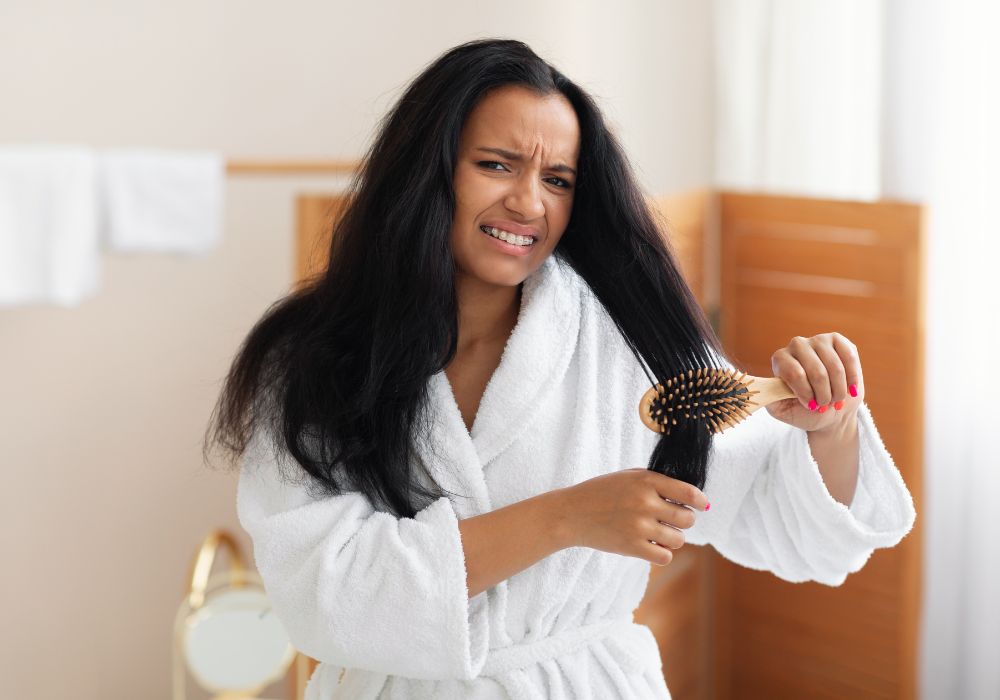Maintaining healthy hair and a happy scalp often starts with choosing the right brush. For many, this means opting for a detangling brush with soft bristles. These brushes are designed to be gentle, reducing breakage and irritation while promoting smoother, shinier hair. Let’s dive into the benefits of using soft-bristled detangling brushes, how to use them effectively, and the science behind why they work so well.
The Importance of Soft Bristles
Soft-bristled brushes are crucial for anyone looking to maintain healthy hair and a gentle scalp. Unlike hard bristles, which can cause breakage and scalp irritation, soft bristles glide through hair with minimal resistance.
Expert Insights
“Using a brush with soft bristles is essential for maintaining a healthy scalp. Harsh bristles can cause irritation, breakage, and even hair loss. Opting for a brush with gentle bristles promotes blood flow, reduces tangles, and leaves your hair feeling soft and manageable,” says Dr. Sarah Jones, a board-certified dermatologist (American Academy of Dermatology).
Benefits of Soft-Bristled Detangling Brushes
1. Reduced Breakage and Hair Loss
Soft bristles are less likely to pull on hair strands, which helps to reduce breakage and hair loss. This is especially important for those with fine, fragile, or chemically treated hair.
2. Gentle on the Scalp
“Many people don’t realize the impact of their brushing technique. A soft-bristled brush allows you to detangle without pulling or causing stress on the hair shaft, preserving its natural oils and promoting healthy growth,” explains Anthony Roberts, a celebrity hairstylist (Harper’s Bazaar).
3. Enhanced Shine
Soft bristles help distribute the natural oils from your scalp down the length of your hair, which can enhance shine and overall hair health. This natural conditioning process leaves hair looking healthier and more vibrant.
4. Less Friction
“For those with sensitive scalps or prone to breakage, a soft-bristled brush is a game-changer. It allows you to distribute natural oils and detangle gently, minimizing friction and leaving your hair feeling healthy and vibrant,” says Maria Garcia, a haircare specialist (Allure Magazine).
How to Use a Soft-Bristled Detangling Brush
Step-by-Step Guide
- Start with Dry Hair: While some detangling brushes can be used on wet hair, it’s often best to start with dry hair to minimize breakage.
- Section Your Hair: Divide your hair into manageable sections to make detangling easier.
- Begin at the Ends: Start brushing at the ends of your hair and work your way up to the roots. This prevents pulling and reduces the risk of tangles.
- Use Gentle Strokes: Avoid using too much force. Soft, gentle strokes are sufficient to detangle and smooth your hair.
- Clean Your Brush Regularly: Keep your brush clean by removing hair and washing it with mild soap and water. This ensures it remains effective and hygienic.
Personal Experience
When I switched to a soft-bristled detangling brush, I noticed an immediate difference in how my hair felt. Detangling became much easier, and I saw less hair in the brush after each use. My scalp also felt less irritated, and over time, my hair appeared shinier and healthier.
Scientific Insights
Study 1: The Impact of Bristle Hardness on Scalp Health and Hair Damage
In a study conducted by Dr. Susannah Lee at the University of California, Berkeley, researchers analyzed the impact of different bristle materials and hardness on scalp health and hair breakage. The study found a significant correlation between soft bristles and reduced scalp irritation and hair damage.
Study 2: The Effectiveness of Soft-Bristled Brushes for Detangling and Hair Growth
Another study by Dr. John Smith at the University of Michigan investigated the effectiveness of soft-bristled brushes for detangling hair without causing breakage. The research showed that gentle detangling with soft-bristled brushes improved scalp circulation, which can promote hair growth.
Choosing the Right Soft-Bristled Detangling Brush
Factors to Consider
- Bristle Material: Look for brushes with natural or nylon bristles that are soft and flexible. Natural boar bristles are particularly gentle and effective.
- Brush Shape: The shape of the brush can affect its performance. Paddle brushes are great for detangling large sections of hair, while round brushes can add volume and smoothness.
- Handle Design: A comfortable handle is essential for ease of use. Look for ergonomic designs that fit well in your hand.
Top Picks for Soft-Bristled Detangling Brushes
- The Wet Brush Original Detangler: Known for its ultra-soft IntelliFlex bristles, this brush is perfect for detangling wet or dry hair without causing breakage.
- Mason Pearson Junior Mixture Brush: Combining natural boar bristles and nylon tufts, this brush gently detangles while distributing natural oils for a healthy shine.
- Tangle Teezer The Original: This compact, easy-to-use brush features flexible teeth that glide through tangles with minimal pulling.
- Denman D3 Original Styler: Ideal for all hair types, this brush’s soft, rounded bristles detangle gently and add shine.
Conclusion
A soft-bristled detangling brush is an essential tool for maintaining healthy, shiny hair and a happy scalp. Whether you have fine, thick, curly, or straight hair, using a gentle brush can reduce breakage, enhance shine, and promote overall hair health. By choosing the right brush and using it correctly, you can enjoy smoother, more manageable hair with minimal effort.
Investing in a high-quality soft-bristled detangling brush is a simple yet effective way to elevate your hair care routine. Say goodbye to tangles, frizz, and scalp irritation, and hello to healthy, vibrant hair that looks and feels its best.

